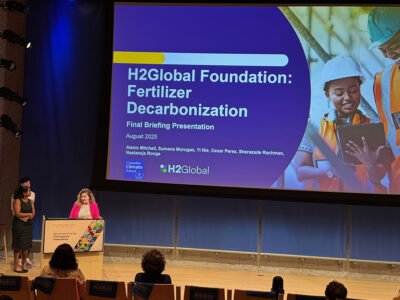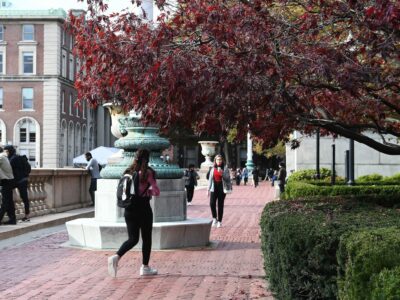By Saumya Mehrotra
As part of the course on The Business and Ecology of Sustainable Forestry with Professor Ralph Schmidt, students visited the Rockefeller State Park in October 2016.

Teaching Assistant Lisa Williams. Photo: Rosalind Louise Venables
The prospects of rain didn’t dampen the spirit of the group of us future foresters as we set out to explore the ecology, management, and history of the Park. This 750-acre park is located North of New York City in Westchester County and hosts a variety of habitats ranging from woodlands and wetlands to meadows and streams. While we examined the various tree species in the park and methods to identify them, we also learned about the different forest management techniques that allow for the flora and fauna to persist in the park.

Photo: Saumya Mehrotra
The course on The Business and Ecology of Sustainable Forestry is aimed at building an understanding of how forests are intricately linked with issues of sustainable development like climate change, poverty, water and business. The course is taught by Professor Ralph Schmidt who has over 40 years of experience in the forestry sector.
Having worked extensively with the United Nations Development Program and Food and Agricultural Organization, Ralph brings in volumes of experience and interesting narratives to class.

Photo: Rosalind Louise Venables
The most interesting part of the trip was Schmidt’s practical demonstration of how the carbon sequestration value of a forest is measured. We also got the opportunity to use actual foresters’ tools for forest mensuration. Field visits like these form a critical part of the academic experience at The Earth Institute. They help translate our classroom observations into hands-on learning, which is something that is especially important for students of environmental science, policy and management.

Saumya Mehrotra is a student of Columbia University’s School of International Public Affairs where she is pursuing a Master of Public Administration in Environmental Science and Policy.
The M.S. in Sustainability Management, co-sponsored by the Earth Institute and Columbia’s School of Professional Studies, trains students to tackle complex and pressing environmental and managerial challenges. The program requires the successful completion of 36 credit points. Those credit points are divided among five comprehensive content areas: integrative sustainability management, economics and quantitative analysis, the physical dimensions of sustainability, the public policy environment of sustainability management, and general and financial management. Visit our website to learn more.



